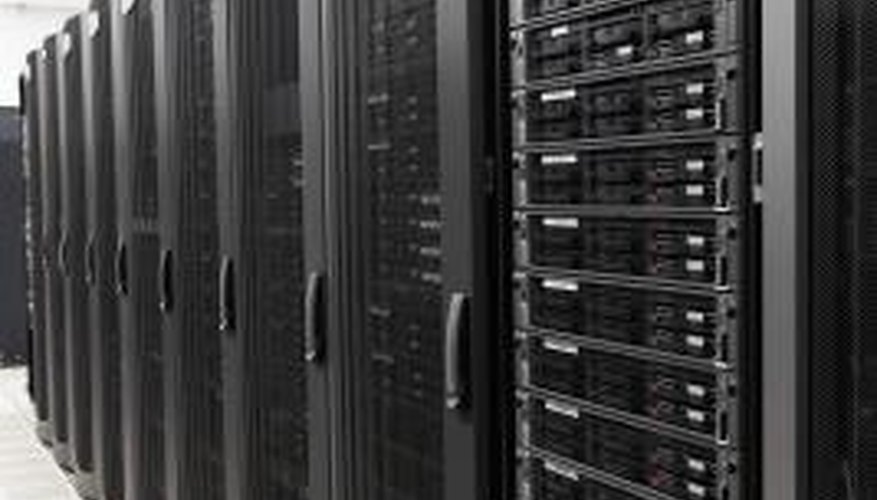Mainframe computers have been around for decades, and large businesses depend on them for processing massive transaction volumes and supporting thousands of online users simultaneously. These powerful machines provide reliability, security and flexibility but require a costly infrastructure. While many have speculated that the mainframe would disappear, the opposite is true, with IBM introducing its latest mainframe offering, the zEnterprise machine, in 2010. Mainframes provide heavy-duty computing power and great advantage to the companies that use them.
Advantage -- Massive Thoughput Capability
Large insurance companies and financial institutions process millions of transactions on a daily basis, as well as supporting their online user base. Not only do mainframes have extremely fast processors, but they manage memory, input/output and storage devices very efficiently. These features combine to produce the total throughput that large companies require.
Advantage -- Unsurpassed Reliability
Mainframe computers perform reliably for those companies that use them, providing built-in fail-over capabilities so that downtime is minimised. The complex operating systems that mainframes run are also far more reliable than smaller servers, enhancing the mainframe's ability to approach 100 per cent uptime numbers.
Advantage -- Security
To date, no mainframe operating system has been hacked, indicating a level of security that has not yet been achieved by server operating systems. While mainframe applications may be breached on occasion, the actual operating systems, such as VM, MVS and z/OS, remain impervious to hackers.
Advantage -- Powerful Operating Systems
The operating systems mentioned above take advantage of the advanced technology in mainframe hardware to help produce the level of throughput that makes mainframes attractive to large companies. These OSs are so powerful and flexible that many of them can run the server-class operating systems such as Windows, Linux and UNIX.
Disadvantage -- Acquisition Cost
The initial cost of implementing mainframe architecture is possibly the biggest disadvantage associated with mainframe computing. Mainframe computers cost millions of dollars, whether purchased or leased, and this is one of the biggest reasons that they are primarily used by large investment firms and insurance companies. However, it is important to remember that the return on this investment is high enough for these companies to spend the money.
Disadvantage -- Support Cost
Mainframe computing environments required highly trained and skilled support personnel. The average salary for a mainframe technical support engineer can be as much as twice that of a server-class systems engineer. Of course the disparity can vary depending on an individual's skills and experience.
Disadvantage -- Power Cost
While mainframes have become more efficient users of electricity, they still consume much more than smaller machines. Even the smallest mainframes have more circuitry built in, causing the higher level of electricity consumption. They also typically require cleaner and more stable power, which involves uninterruptible power supplies that provide conditioning and backup power in the form of batteries.
Disadvantage -- Cooling Cost
Mainframe computers generate a lot of heat due to the larger amount of circuitry and the speed at which they run. Since heat is one of the main enemies of computing equipment, extra cooling must be required. This cooling comes in the form of large air conditioning units and sophisticated air flow engineering. These not only add to the cost of the infrastructure, but to the electrical costs as well.
- Mainframe computers generate a lot of heat due to the larger amount of circuitry and the speed at which they run.
